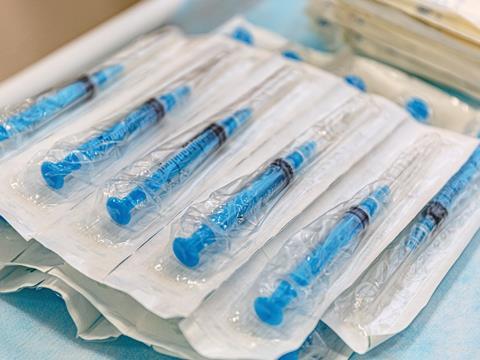
Counterfeit products in the pharmaceutical industry can have serious consequences for customers and consumers alike – so what can be done to nip them in the bud? David DeJean, vice president of global strategic accounts at Systech, explains how regulation, serialization, traceability, and developing technologies can help.
Gray market threats continue to besiege the global medical device business. Counterfeiting and diversion tactics are everywhere, and the COVID-19 pandemic has highlighted the vulnerability of the supply chain. Counterfeit test kits, N95 masks, and other ubiquitous medical devices appeared seemingly overnight. But even the counterfeiting of relatively low-cost products and supplies like PPE jeopardizes the safety of patients.
Online retailers play an unfortunate and sometimes unintentional role in promoting counterfeits and product diversion. With their extensive influence and lack of control, e-commerce sites have become breeding grounds for unauthorized practices. The sale of counterfeit and diverted products may result in substantial financial setbacks for manufacturers, endanger consumer safety, and erode brand trust.
Counterfeits Gone Viral
The pandemic encouraged the onslaught of counterfeit medical supplies. The Organisation for Economic Co-operation and Development (OECD) and the EU Intellectual Property Office (EUIPO) have issued significant guidance on how counterfeiting is a major threat, and how the pandemic has exacerbated the situation. “The COVID-19 pandemic has intensified the problem: criminal networks have reacted very quickly to the crisis and adapted their strategies to take advantage of the shifting landscape.”
Responding reactively means that problems are addressed only after they have been revealed or, worse, caused damage. The negative influence on business and reputation leads to reduced faith in product safety, loss of sales, recalls, and a heightened threat of legal action. By contrast, preventive measures ensure that counterfeits don’t enter the market in the first place.
Take a Tip from Pharma: EU FMD and DSCSA
The EU FMD (Falsified Medicines Directive) and US DSCSA (Drug Supply Chain Security Act) are notable developments in the battle against counterfeiting and diversion, and medical device manufacturers are beginning to adopt practices already in place for pharmaceuticals.
Through the process of serialization, each item is tracked and traced with a unique code throughout its journey in the supply chain, from manufacturer to end user. Adopting protocols for medical devices patterned on these pharma-protocols is an essential step towards a secure, interoperable, and digital system that ensures transparency and accountability in the supply chain.
Medical devices in Europe are subject to numerous registration and labeling regulations, but none with the same individual product identity rigor as with pharmaceuticals. Future-focused manufacturers can gain substantial benefits from adopting guidelines that validate authenticity by tracking a product’s progression from creation to the end patient.
Added protection layers, such as digital fingerprinting, can be applied to medical devices. This process analyzes an existing barcode, creating a unique digital identifier that can be verified anywhere with a smartphone. In a comprehensive product security program, this solution is instrumental in rapidly discovering and removing counterfeit and diverted goods.
Artificial intelligence and machine learning tools detect inconsistencies in the supply chain, highlighting possible instances of counterfeit products. AI and ML can instantaneously examine vast quantities of data, helping highlight deviations and abnormalities.
The Long-Term Data Advantage of Track and Trace
By adopting supply chain technologies, manufacturers gain data to fine-tune the ecosystem. In an industry where counterfeit and diverted products pose severe consequences for consumer safety and market stability, manufacturers that implement traceability systems come out ahead, and not just due to enhanced safety.
Beyond reinforcing supply chain integrity, manufacturers that embrace guidelines modeled after DSCSA and FMD gain holistic insights into a product’s life span and distribution trends. Long-term strategic planning and tactical acumen lead to smart decisions and preemptive actions.
A cohesive and interconnected supply chain network allows device makers to detect problems early and reduce risks more effectively. Improved visibility, along with advanced analytics, can reveal significant insights about product distribution, sales patterns, and user behavior. By instituting a refined tracking system, manufacturers secure the authenticity of their products, preserve the value of the brand image, and above all, ensure the safety of consumers.
The fight against counterfeiting and diversion demands a multi-dimensional strategy that combines legal measures, regulatory structures, and proactive collaboration. The path to protecting the supply chain from counterfeit and diverted consumer products is a long one. The guarantee of consumer safety arises from inventive technology, strict legal compliance, and a forward-thinking approach.
If you liked this article, you might also enjoy:
The L’Oréal approach to packaging sustainability
The way we talk about plastic needs to change – here’s how to get it right
What steps is Apple taking to make its packaging more sustainable?











No comments yet